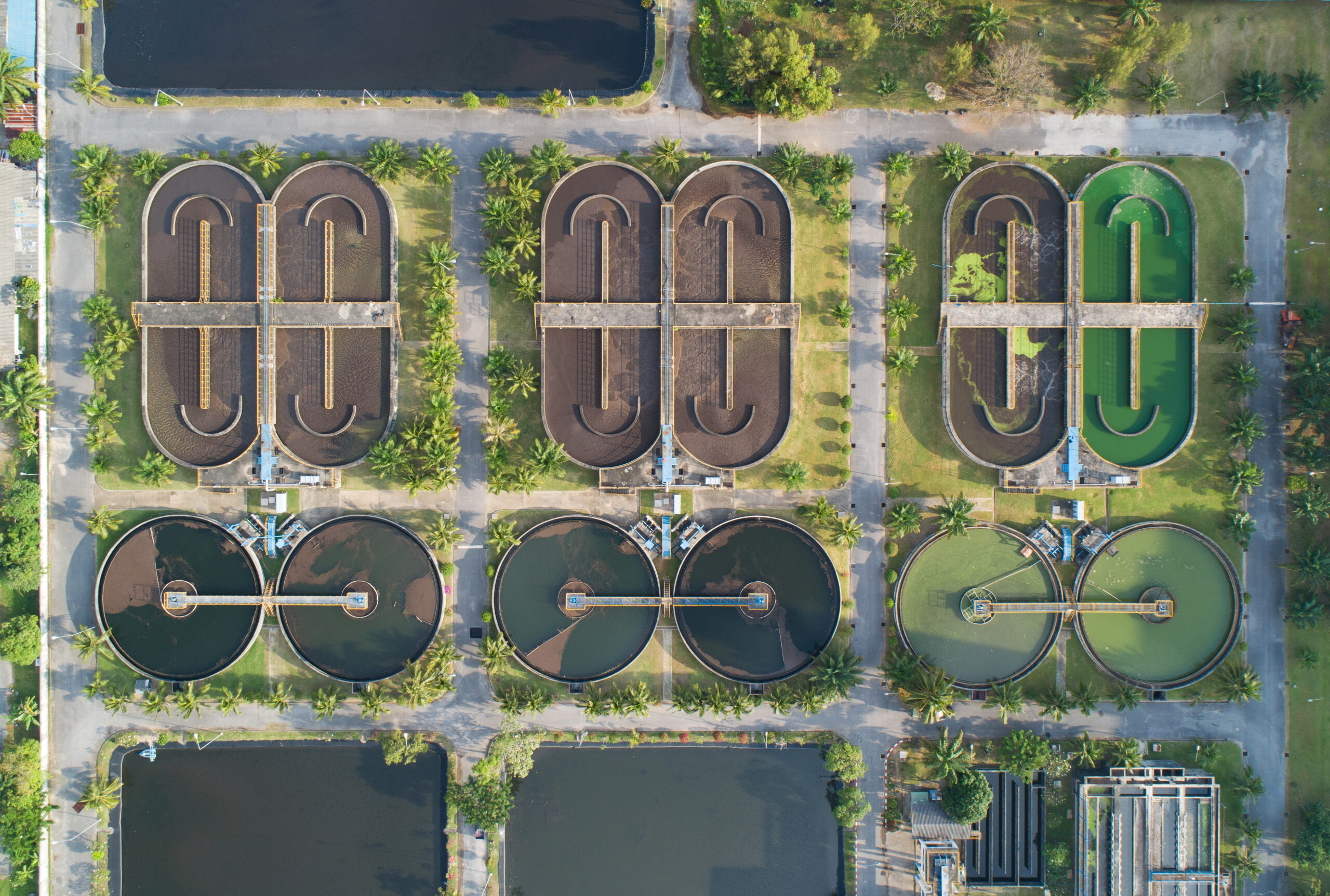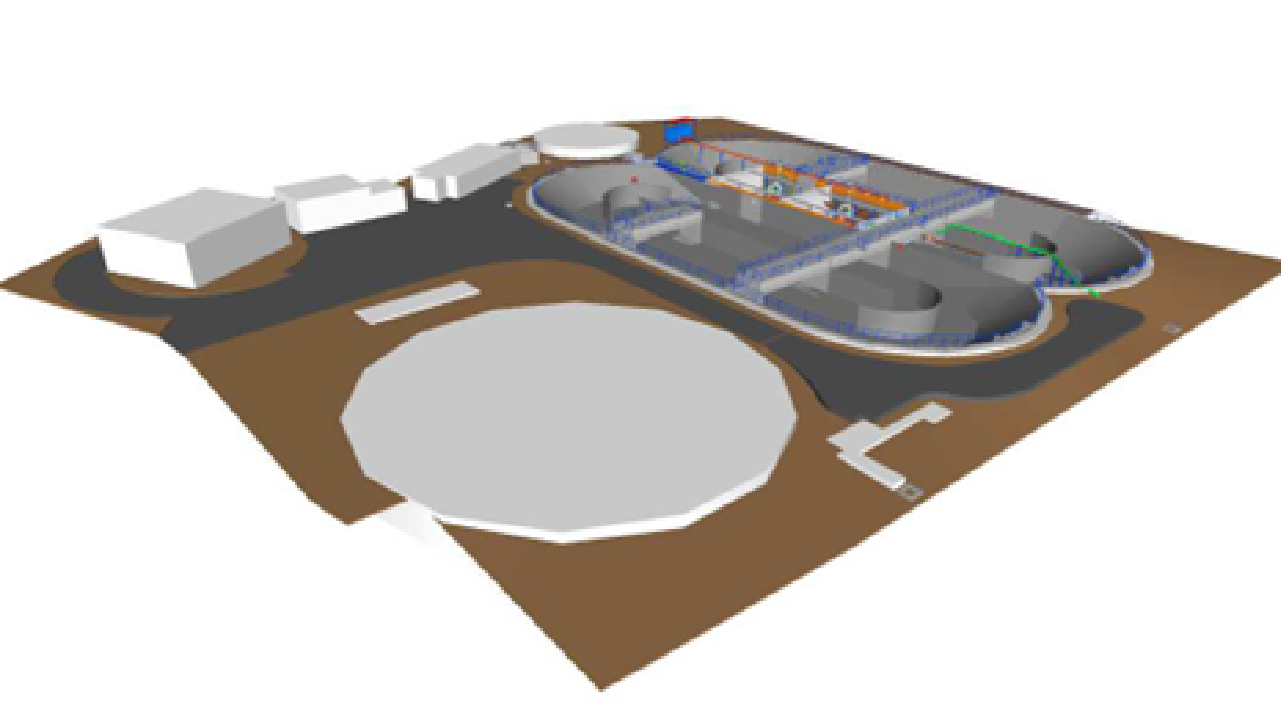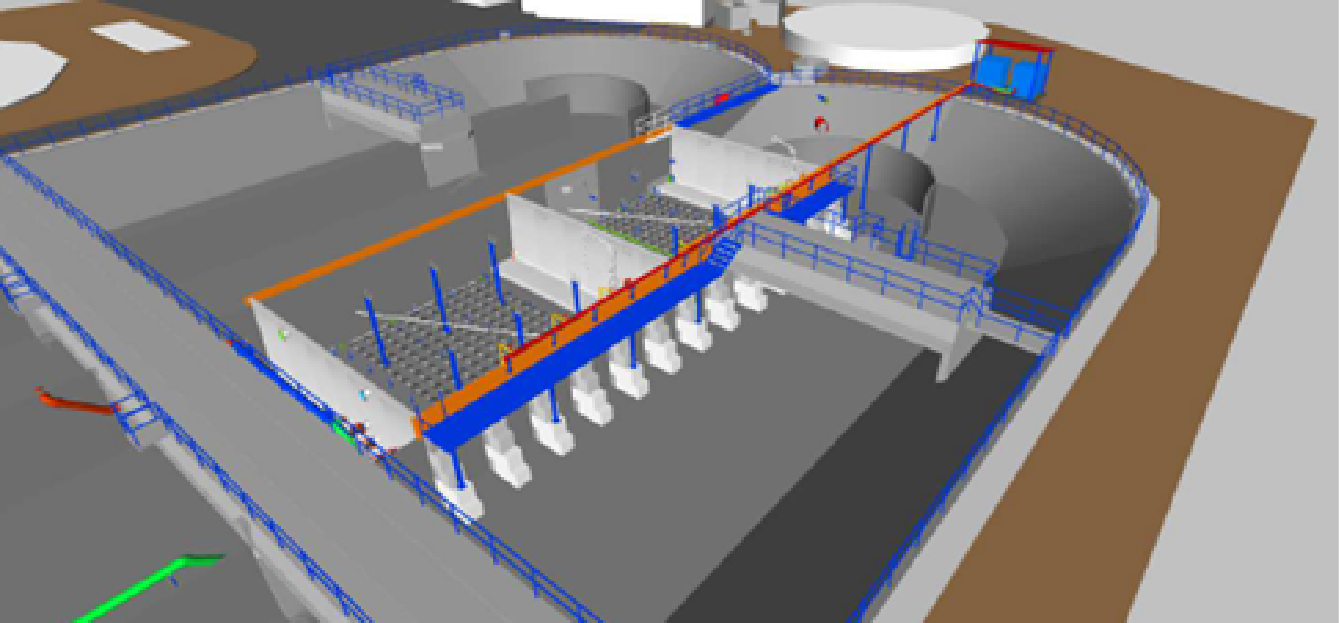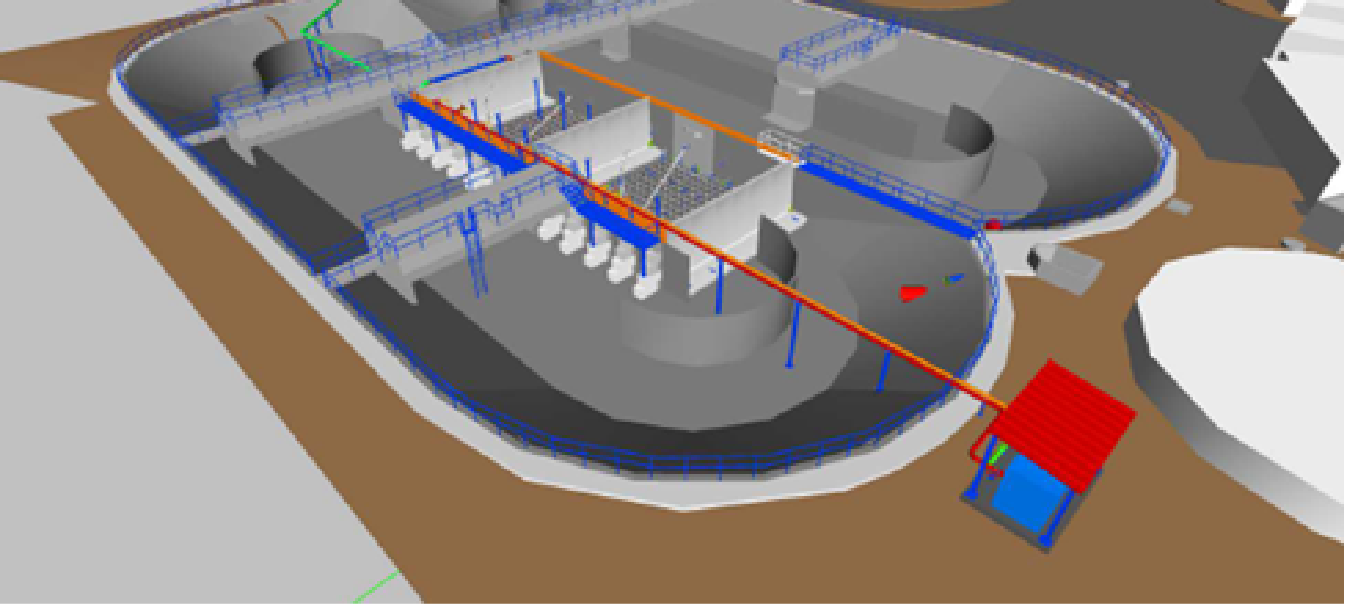
One of the objectives of the LIFE RESEAU project is to increase the treatment capacity of Wastewater Treatment Plants (WWTP) using existing infrastructures, implementing intensive advanced technologies.
In the Moaña WWTP, the application of a technology based on biofilms will be demonstrated. Biofilms are structured colonies of bacterial cells created by the bacteria themselves. This innovative technology will be installed in one of the currently unused biological carousels. In the specific case of Moaña, a system based on the formation of aerobic granules (Aerobic Granular Systems – AGS) will be applied.
In order to carry out the retrofitting work, Aqualia and its engineering department drew up a project in which the following premises were followed:
-
- Locate the reactor in carousel B of the WWTP without affecting the conventional operation of the activated sludge carousel A.
- Carry out a reversible intervention, allowing the carousel to be used again as an activated sludge system if necessary.
- Have an AGS reactor of at least 500 m3 capacity.
- Preferably use a water circulation system based on gravity flow, avoiding the need for pumping and recirculation.
After analysing the available options, it is decided to locate the granular system in the central area of the existing reactor corridor, executing a division of the reactor corridor by fully reversible means, so that the original configuration can be restored when necessary.
In order for all the pipes of the granular system to work by gravity, it is necessary to raise the central wall that separates the two channels, as well as to raise the intermediate wall, so that the water level is 0.30 m higher than that of the current biological reactor.
Finally, two AGS reactors of approximately 450 m3 capacity each will be constructed, located in the central area of the B channel corridor, as shown in Figure 1.
Figure 1. Plan view of the location of the two granular reactors (13) and (14) located in channel B of the Moaña WWTP.
A construction project has been developed to allocate the necessary civil works, along with a detailed engineering plan that outlines all the essential aspects required to complete the renovation, including the installation of electrical and mechanical equipment in the final construction.
Figure 2 provides a 3D view of the Moaña WWTP (as viewed from the sea), depicting the control buildings, pre-treatment and secondary settling units, and anaerobic selector units that are not impacted by the refurbishment (in grey). The figure also highlights the biological carousels in detail.
Figure 2. General view of the Moaña WWTP, in the foreground the secondary decanter, top right the biological carousels A and B, including the modifications to carousel B.
Figures 3 and 4 show different views of the granular reactors and electromechanical equipment to be installed at the Moaña WWTP. It will increase the treatment capacity per unit of surface area by more than 600%, thereby increasing the resilience of this infrastructure to a scenario of climate change in which rainfall increases in intensity.
Figure 3. View of the two granular reactors on carousel B, with the reinforcements of the central wall and the access walkways.
Figure 4. View of the two reactors and in the foreground the air blower house.





